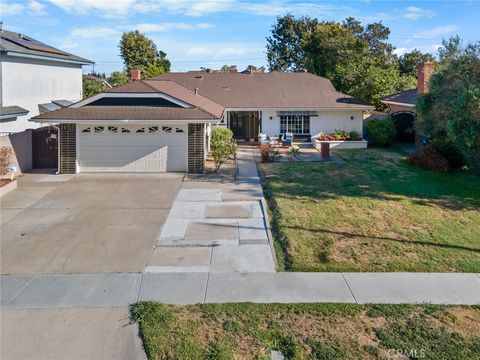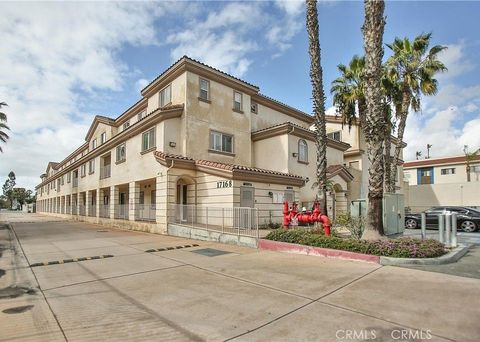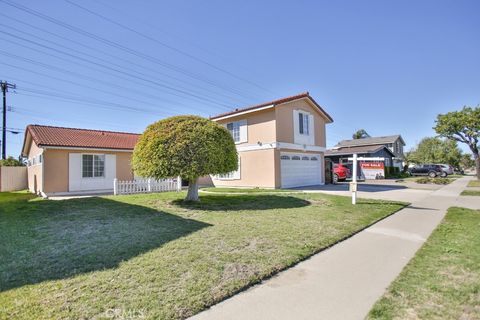Serving Fountain Valley and Orange County communities for over 35 years. (714) 343-9294 MICAH STOVALL #DRE01240489 Real Estate
Real Estate Just Listed Today in Fountain Valley CA
-
$1,650,000
9446 Gardenia Ave
Fountain Valley, CA -
$829,000
17401 Hood Court
Fountain Valley, CA -
$1,449,000
18417 Mount Kristina Street
Fountain Valley, CA -
$1,550,000
17215 Buttonwood Street
Fountain Valley, CA -
$1,699,000
10452 Circulo De Juarez
Fountain Valley, CA -
$575,000
17200 Newhope Street #217
Fountain Valley, CA -
$419,999
17200 Newhope Street #109
Fountain Valley, CA -
$659,990
17168 Newhope #222
Fountain Valley, CA -
$1,298,800
17475 Santa Lucia Street
Fountain Valley, CA -
$1,435,000
18016 Roch Court
Fountain Valley, CA
Lot Size7,441 sqft
Home Size2,100 sqft
Beds4 Beds
Baths2 Baths
Lot Size1,320 sqft
Home Size1,280 sqft
Beds3 Beds
Baths2.25 Baths
Lot Size7,184 sqft
Home Size2,125 sqft
Beds4 Beds
Baths2.75 Baths
Lot Size8,185 sqft
Home Size2,119 sqft
Beds4 Beds
Baths3 Baths
Lot Size6,883 sqft
Home Size2,561 sqft
Beds3 Beds
Baths3 Baths
Lot Size2.55 ac
Home Size1,040 sqft
Beds2 Beds
Baths2 Baths
Lot SizeN/A
Home Size572 sqft
Beds1 Bed
Baths1 Bath
Lot SizeN/A
Home Size1,112 sqft
Beds2 Beds
Baths2 Baths
Lot Size7,201 sqft
Home Size1,795 sqft
Beds4 Beds
Baths3 Baths
Lot Size3,315 sqft
Home Size1,811 sqft
Beds3 Beds
Baths2.5 Baths
-
Lot Size7,441 sqft
Home Size2,100 sqft
Beds4 Beds
Baths2 Baths
-
Lot Size1,320 sqft
Home Size1,280 sqft
Beds3 Beds
Baths2.25 Baths
-
Lot Size7,184 sqft
Home Size2,125 sqft
Beds4 Beds
Baths2.75 Baths
-
Lot Size8,185 sqft
Home Size2,119 sqft
Beds4 Beds
Baths3 Baths
-
Lot Size6,883 sqft
Home Size2,561 sqft
Beds3 Beds
Baths3 Baths
-
Lot Size2.55 ac
Home Size1,040 sqft
Beds2 Beds
Baths2 Baths
-
Lot SizeN/A
Home Size572 sqft
Beds1 Bed
Baths1 Bath
-
Lot SizeN/A
Home Size1,112 sqft
Beds2 Beds
Baths2 Baths
-
Lot Size7,201 sqft
Home Size1,795 sqft
Beds4 Beds
Baths3 Baths
-
Lot Size3,315 sqft
Home Size1,811 sqft
Beds3 Beds
Baths2.5 Baths
-
$1,650,000
9446 Gardenia Ave
Fountain Valley CA Real Estate with the Largest Lots
-
$1,650,000
9446 Gardenia Ave
Fountain Valley, CA -
$829,000
17401 Hood Court
Fountain Valley, CA -
$1,449,000
18417 Mount Kristina Street
Fountain Valley, CA -
$1,550,000
17215 Buttonwood Street
Fountain Valley, CA -
$1,699,000
10452 Circulo De Juarez
Fountain Valley, CA -
$575,000
17200 Newhope Street #217
Fountain Valley, CA -
$419,999
17200 Newhope Street #109
Fountain Valley, CA -
$659,990
17168 Newhope #222
Fountain Valley, CA -
$1,298,800
17475 Santa Lucia Street
Fountain Valley, CA -
$1,435,000
18016 Roch Court
Fountain Valley, CA
Lot Size7,441 sqft
Home Size2,100 sqft
Beds4 Beds
Baths2 Baths
Lot Size1,320 sqft
Home Size1,280 sqft
Beds3 Beds
Baths2.25 Baths
Lot Size7,184 sqft
Home Size2,125 sqft
Beds4 Beds
Baths2.75 Baths
Lot Size8,185 sqft
Home Size2,119 sqft
Beds4 Beds
Baths3 Baths
Lot Size6,883 sqft
Home Size2,561 sqft
Beds3 Beds
Baths3 Baths
Lot Size2.55 ac
Home Size1,040 sqft
Beds2 Beds
Baths2 Baths
Lot SizeN/A
Home Size572 sqft
Beds1 Bed
Baths1 Bath
Lot SizeN/A
Home Size1,112 sqft
Beds2 Beds
Baths2 Baths
Lot Size7,201 sqft
Home Size1,795 sqft
Beds4 Beds
Baths3 Baths
Lot Size3,315 sqft
Home Size1,811 sqft
Beds3 Beds
Baths2.5 Baths
-
Lot Size7,441 sqft
Home Size2,100 sqft
Beds4 Beds
Baths2 Baths
-
Lot Size1,320 sqft
Home Size1,280 sqft
Beds3 Beds
Baths2.25 Baths
-
Lot Size7,184 sqft
Home Size2,125 sqft
Beds4 Beds
Baths2.75 Baths
-
Lot Size8,185 sqft
Home Size2,119 sqft
Beds4 Beds
Baths3 Baths
-
Lot Size6,883 sqft
Home Size2,561 sqft
Beds3 Beds
Baths3 Baths
-
Lot Size2.55 ac
Home Size1,040 sqft
Beds2 Beds
Baths2 Baths
-
Lot SizeN/A
Home Size572 sqft
Beds1 Bed
Baths1 Bath
-
Lot SizeN/A
Home Size1,112 sqft
Beds2 Beds
Baths2 Baths
-
Lot Size7,201 sqft
Home Size1,795 sqft
Beds4 Beds
Baths3 Baths
-
Lot Size3,315 sqft
Home Size1,811 sqft
Beds3 Beds
Baths2.5 Baths
-
$1,650,000
9446 Gardenia Ave
Largest Price Reduced Real Estate in Fountain Valley CA
-
$1,650,000
9446 Gardenia Ave
Fountain Valley, CA -
$829,000
17401 Hood Court
Fountain Valley, CA -
$1,449,000
18417 Mount Kristina Street
Fountain Valley, CA -
$1,550,000
17215 Buttonwood Street
Fountain Valley, CA -
$1,699,000
10452 Circulo De Juarez
Fountain Valley, CA -
$575,000
17200 Newhope Street #217
Fountain Valley, CA -
$419,999
17200 Newhope Street #109
Fountain Valley, CA -
$659,990
17168 Newhope #222
Fountain Valley, CA -
$1,298,800
17475 Santa Lucia Street
Fountain Valley, CA -
$1,435,000
18016 Roch Court
Fountain Valley, CA
Lot Size7,441 sqft
Home Size2,100 sqft
Beds4 Beds
Baths2 Baths
Lot Size1,320 sqft
Home Size1,280 sqft
Beds3 Beds
Baths2.25 Baths
Lot Size7,184 sqft
Home Size2,125 sqft
Beds4 Beds
Baths2.75 Baths
Lot Size8,185 sqft
Home Size2,119 sqft
Beds4 Beds
Baths3 Baths
Lot Size6,883 sqft
Home Size2,561 sqft
Beds3 Beds
Baths3 Baths
Lot Size2.55 ac
Home Size1,040 sqft
Beds2 Beds
Baths2 Baths
Lot SizeN/A
Home Size572 sqft
Beds1 Bed
Baths1 Bath
Lot SizeN/A
Home Size1,112 sqft
Beds2 Beds
Baths2 Baths
Lot Size7,201 sqft
Home Size1,795 sqft
Beds4 Beds
Baths3 Baths
Lot Size3,315 sqft
Home Size1,811 sqft
Beds3 Beds
Baths2.5 Baths
-
Lot Size7,441 sqft
Home Size2,100 sqft
Beds4 Beds
Baths2 Baths
-
Lot Size1,320 sqft
Home Size1,280 sqft
Beds3 Beds
Baths2.25 Baths
-
Lot Size7,184 sqft
Home Size2,125 sqft
Beds4 Beds
Baths2.75 Baths
-
Lot Size8,185 sqft
Home Size2,119 sqft
Beds4 Beds
Baths3 Baths
-
Lot Size6,883 sqft
Home Size2,561 sqft
Beds3 Beds
Baths3 Baths
-
Lot Size2.55 ac
Home Size1,040 sqft
Beds2 Beds
Baths2 Baths
-
Lot SizeN/A
Home Size572 sqft
Beds1 Bed
Baths1 Bath
-
Lot SizeN/A
Home Size1,112 sqft
Beds2 Beds
Baths2 Baths
-
Lot Size7,201 sqft
Home Size1,795 sqft
Beds4 Beds
Baths3 Baths
-
Lot Size3,315 sqft
Home Size1,811 sqft
Beds3 Beds
Baths2.5 Baths
-
$1,650,000
9446 Gardenia Ave
Most Expensive Real Estate in Fountain Valley CA
-
$1,650,000
9446 Gardenia Ave
Fountain Valley, CA -
$829,000
17401 Hood Court
Fountain Valley, CA -
$1,449,000
18417 Mount Kristina Street
Fountain Valley, CA -
$1,550,000
17215 Buttonwood Street
Fountain Valley, CA -
$1,699,000
10452 Circulo De Juarez
Fountain Valley, CA -
$575,000
17200 Newhope Street #217
Fountain Valley, CA -
$419,999
17200 Newhope Street #109
Fountain Valley, CA -
$659,990
17168 Newhope #222
Fountain Valley, CA -
$1,298,800
17475 Santa Lucia Street
Fountain Valley, CA -
$1,435,000
18016 Roch Court
Fountain Valley, CA
Lot Size7,441 sqft
Home Size2,100 sqft
Beds4 Beds
Baths2 Baths
Lot Size1,320 sqft
Home Size1,280 sqft
Beds3 Beds
Baths2.25 Baths
Lot Size7,184 sqft
Home Size2,125 sqft
Beds4 Beds
Baths2.75 Baths
Lot Size8,185 sqft
Home Size2,119 sqft
Beds4 Beds
Baths3 Baths
Lot Size6,883 sqft
Home Size2,561 sqft
Beds3 Beds
Baths3 Baths
Lot Size2.55 ac
Home Size1,040 sqft
Beds2 Beds
Baths2 Baths
Lot SizeN/A
Home Size572 sqft
Beds1 Bed
Baths1 Bath
Lot SizeN/A
Home Size1,112 sqft
Beds2 Beds
Baths2 Baths
Lot Size7,201 sqft
Home Size1,795 sqft
Beds4 Beds
Baths3 Baths
Lot Size3,315 sqft
Home Size1,811 sqft
Beds3 Beds
Baths2.5 Baths
-
Lot Size7,441 sqft
Home Size2,100 sqft
Beds4 Beds
Baths2 Baths
-
Lot Size1,320 sqft
Home Size1,280 sqft
Beds3 Beds
Baths2.25 Baths
-
Lot Size7,184 sqft
Home Size2,125 sqft
Beds4 Beds
Baths2.75 Baths
-
Lot Size8,185 sqft
Home Size2,119 sqft
Beds4 Beds
Baths3 Baths
-
Lot Size6,883 sqft
Home Size2,561 sqft
Beds3 Beds
Baths3 Baths
-
Lot Size2.55 ac
Home Size1,040 sqft
Beds2 Beds
Baths2 Baths
-
Lot SizeN/A
Home Size572 sqft
Beds1 Bed
Baths1 Bath
-
Lot SizeN/A
Home Size1,112 sqft
Beds2 Beds
Baths2 Baths
-
Lot Size7,201 sqft
Home Size1,795 sqft
Beds4 Beds
Baths3 Baths
-
Lot Size3,315 sqft
Home Size1,811 sqft
Beds3 Beds
Baths2.5 Baths
-
$1,650,000
9446 Gardenia Ave
Most Square Footage in Fountain Valley CA Real Estate
-
$1,650,000
9446 Gardenia Ave
Fountain Valley, CA -
$829,000
17401 Hood Court
Fountain Valley, CA -
$1,449,000
18417 Mount Kristina Street
Fountain Valley, CA -
$1,550,000
17215 Buttonwood Street
Fountain Valley, CA -
$1,699,000
10452 Circulo De Juarez
Fountain Valley, CA -
$575,000
17200 Newhope Street #217
Fountain Valley, CA -
$419,999
17200 Newhope Street #109
Fountain Valley, CA -
$659,990
17168 Newhope #222
Fountain Valley, CA -
$1,298,800
17475 Santa Lucia Street
Fountain Valley, CA -
$1,435,000
18016 Roch Court
Fountain Valley, CA
Lot Size7,441 sqft
Home Size2,100 sqft
Beds4 Beds
Baths2 Baths
Lot Size1,320 sqft
Home Size1,280 sqft
Beds3 Beds
Baths2.25 Baths
Lot Size7,184 sqft
Home Size2,125 sqft
Beds4 Beds
Baths2.75 Baths
Lot Size8,185 sqft
Home Size2,119 sqft
Beds4 Beds
Baths3 Baths
Lot Size6,883 sqft
Home Size2,561 sqft
Beds3 Beds
Baths3 Baths
Lot Size2.55 ac
Home Size1,040 sqft
Beds2 Beds
Baths2 Baths
Lot SizeN/A
Home Size572 sqft
Beds1 Bed
Baths1 Bath
Lot SizeN/A
Home Size1,112 sqft
Beds2 Beds
Baths2 Baths
Lot Size7,201 sqft
Home Size1,795 sqft
Beds4 Beds
Baths3 Baths
Lot Size3,315 sqft
Home Size1,811 sqft
Beds3 Beds
Baths2.5 Baths
-
Lot Size7,441 sqft
Home Size2,100 sqft
Beds4 Beds
Baths2 Baths
-
Lot Size1,320 sqft
Home Size1,280 sqft
Beds3 Beds
Baths2.25 Baths
-
Lot Size7,184 sqft
Home Size2,125 sqft
Beds4 Beds
Baths2.75 Baths
-
Lot Size8,185 sqft
Home Size2,119 sqft
Beds4 Beds
Baths3 Baths
-
Lot Size6,883 sqft
Home Size2,561 sqft
Beds3 Beds
Baths3 Baths
-
Lot Size2.55 ac
Home Size1,040 sqft
Beds2 Beds
Baths2 Baths
-
Lot SizeN/A
Home Size572 sqft
Beds1 Bed
Baths1 Bath
-
Lot SizeN/A
Home Size1,112 sqft
Beds2 Beds
Baths2 Baths
-
Lot Size7,201 sqft
Home Size1,795 sqft
Beds4 Beds
Baths3 Baths
-
Lot Size3,315 sqft
Home Size1,811 sqft
Beds3 Beds
Baths2.5 Baths
-
$1,650,000
9446 Gardenia Ave
Least Expensive Real Estate in Fountain Valley CA
-
$1,650,000
9446 Gardenia Ave
Fountain Valley, CA -
$829,000
17401 Hood Court
Fountain Valley, CA -
$1,449,000
18417 Mount Kristina Street
Fountain Valley, CA -
$1,550,000
17215 Buttonwood Street
Fountain Valley, CA -
$1,699,000
10452 Circulo De Juarez
Fountain Valley, CA -
$575,000
17200 Newhope Street #217
Fountain Valley, CA -
$419,999
17200 Newhope Street #109
Fountain Valley, CA -
$659,990
17168 Newhope #222
Fountain Valley, CA -
$1,298,800
17475 Santa Lucia Street
Fountain Valley, CA -
$1,435,000
18016 Roch Court
Fountain Valley, CA
Lot Size7,441 sqft
Home Size2,100 sqft
Beds4 Beds
Baths2 Baths
Lot Size1,320 sqft
Home Size1,280 sqft
Beds3 Beds
Baths2.25 Baths
Lot Size7,184 sqft
Home Size2,125 sqft
Beds4 Beds
Baths2.75 Baths
Lot Size8,185 sqft
Home Size2,119 sqft
Beds4 Beds
Baths3 Baths
Lot Size6,883 sqft
Home Size2,561 sqft
Beds3 Beds
Baths3 Baths
Lot Size2.55 ac
Home Size1,040 sqft
Beds2 Beds
Baths2 Baths
Lot SizeN/A
Home Size572 sqft
Beds1 Bed
Baths1 Bath
Lot SizeN/A
Home Size1,112 sqft
Beds2 Beds
Baths2 Baths
Lot Size7,201 sqft
Home Size1,795 sqft
Beds4 Beds
Baths3 Baths
Lot Size3,315 sqft
Home Size1,811 sqft
Beds3 Beds
Baths2.5 Baths
-
Lot Size7,441 sqft
Home Size2,100 sqft
Beds4 Beds
Baths2 Baths
-
Lot Size1,320 sqft
Home Size1,280 sqft
Beds3 Beds
Baths2.25 Baths
-
Lot Size7,184 sqft
Home Size2,125 sqft
Beds4 Beds
Baths2.75 Baths
-
Lot Size8,185 sqft
Home Size2,119 sqft
Beds4 Beds
Baths3 Baths
-
Lot Size6,883 sqft
Home Size2,561 sqft
Beds3 Beds
Baths3 Baths
-
Lot Size2.55 ac
Home Size1,040 sqft
Beds2 Beds
Baths2 Baths
-
Lot SizeN/A
Home Size572 sqft
Beds1 Bed
Baths1 Bath
-
Lot SizeN/A
Home Size1,112 sqft
Beds2 Beds
Baths2 Baths
-
Lot Size7,201 sqft
Home Size1,795 sqft
Beds4 Beds
Baths3 Baths
-
Lot Size3,315 sqft
Home Size1,811 sqft
Beds3 Beds
Baths2.5 Baths
-
$1,650,000
9446 Gardenia Ave
Powered by WordPress. Built on the Thematic Theme Framework. test
Copyright 2025 | Orange County web design












‘Fiscal Cliff’ Deal Favors Housing Recovery
The housing market is on firmer ground today, as two major tax provisions survived the “fiscal cliff.” Congress did not touch the mortgage interest deduction, and it ex-tended tax relief for one year on mortgage debt forgiveness. “An extension of the tax break is positive for home values by reducing the number of foreclosures and helping more troubled borrowers stay in their homes,” wrote Jaret Seiberg of Guggenheim Partners. “That means less supply on the market.”
Under a law signed in 2007, debt relief on loan modifications, short sales, and foreclosures were no longer taxable; that break expired at the end of 2012. The fear was that if the tax break was not extended, home owners would not agree to short sales (when the home is sold for less than the value of the mortgage) because they would then face a tax bill. They would also not agree to principal reduction loan modifications, which have proven to be far more successful than other modifications that leave the principal balance as is. Under the $25 billion mortgage servicing settlement, borrowers have received $6.3 billion in mortgage principal relief through September, according to the settlement’s monitor, Joseph A. Smith, Jr.
The average loan balance reduction, $150,000. Banks completed 13,351 principal reduction loan modifications in November alone, according to Amherst Securities Group, a 62 percent jump from September.
Short sales also surged toward the end of the year, thanks to streamlined procedures and a more aggressive stance by the big banks, again in part due to the mortgage servicing settlement. More than 98 thou-sand short sales were completed in the third quarter of 2012, according to RealtyTrac. The “fiscal cliff” deal also allows borrowers to deduct the amount they pay for private mortgage insurance, which has become increasingly prevalent in today’s tighter mortgage market.
All of the above will help to lower the number of fore-closures and support the slow rise in home prices. The number of homes in the so-called “shadow inventory” (properties that have seriously delinquent mortgages, are in foreclosure, or are owned by banks but not yet listed for sale) fell to 2.3 million in October, according to a new report from CoreLogic. That represents a seven month supply at the current sales pace, and is a 12 percent drop from a year ago.
“We expect a gradual and progressive contraction in the shadow inventory in 2013 as investors continue to snap up foreclosed and REO properties and the broader recovery in housing market fundamentals takes hold,” said Anand Nallathambi, president and CEO of CoreLogic in a release. What would not have been the case, had tax relief on debt forgiveness in short sales and principal reduction modifications come to an end.
Sources: cnbc.com